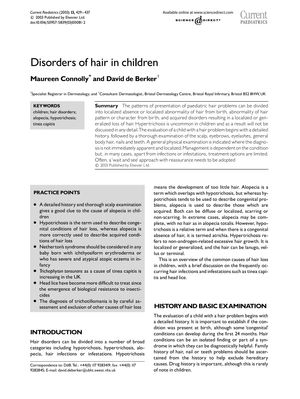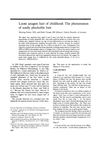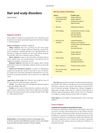Disorders of Hair in Children
September 2003
in “
Current Paediatrics
”
congenital hypotrichosis acquired alopecia tinea capitis Trichophyton tonsurans head lice insecticide resistance trichotillomania alopecia areata traction alopecia Netherton's syndrome monilethrix pili torti trichothiodystrophy brittle hair loose anagen syndrome ringworm lice hair-pulling disorder spot baldness hair breakage easily pluckable hair

TLDR The document concludes that accurate diagnosis and understanding the type of hair disorder are crucial for treating hair loss in children.
The 2003 document reviews pediatric hair disorders, distinguishing between congenital hypotrichosis and acquired alopecia. It notes an increase in tinea capitis caused by Trichophyton tonsurans in the UK and the challenge of treating head lice due to insecticide resistance. The paper highlights the importance of accurate diagnosis in conditions like trichotillomania, alopecia areata, and traction alopecia, and suggests that management often involves observation with limited treatment options, except for infections. It also describes congenital conditions like Netherton's syndrome, monilethrix, and pili torti, and their features. Trichothiodystrophy, associated with brittle hair, and loose anagen syndrome, characterized by easily pluckable hair in young girls, are also discussed. The document underscores the necessity of a detailed history and scalp examination in determining the cause of hair loss in children and the importance of distinguishing between different types of alopecia for proper treatment.



